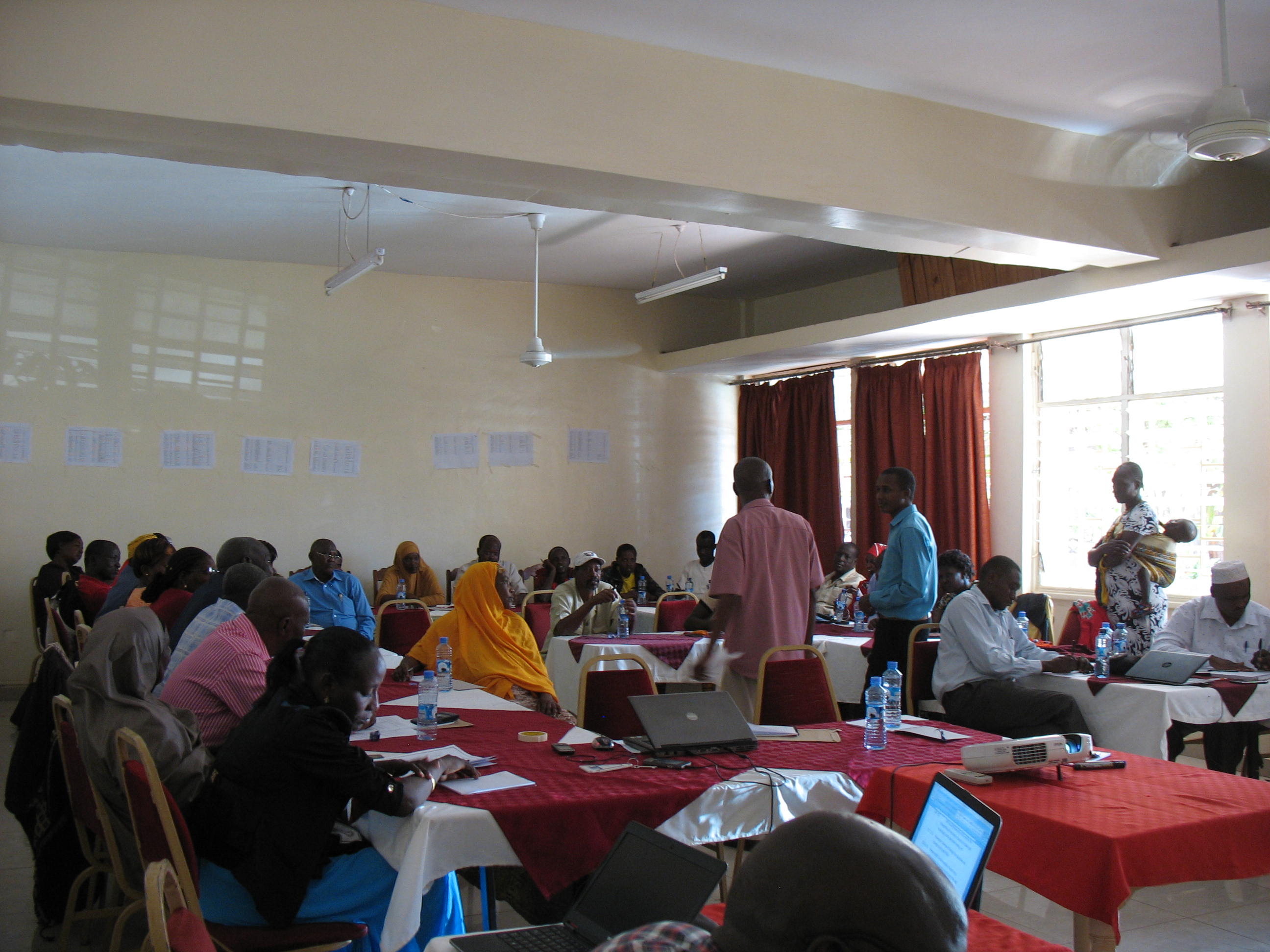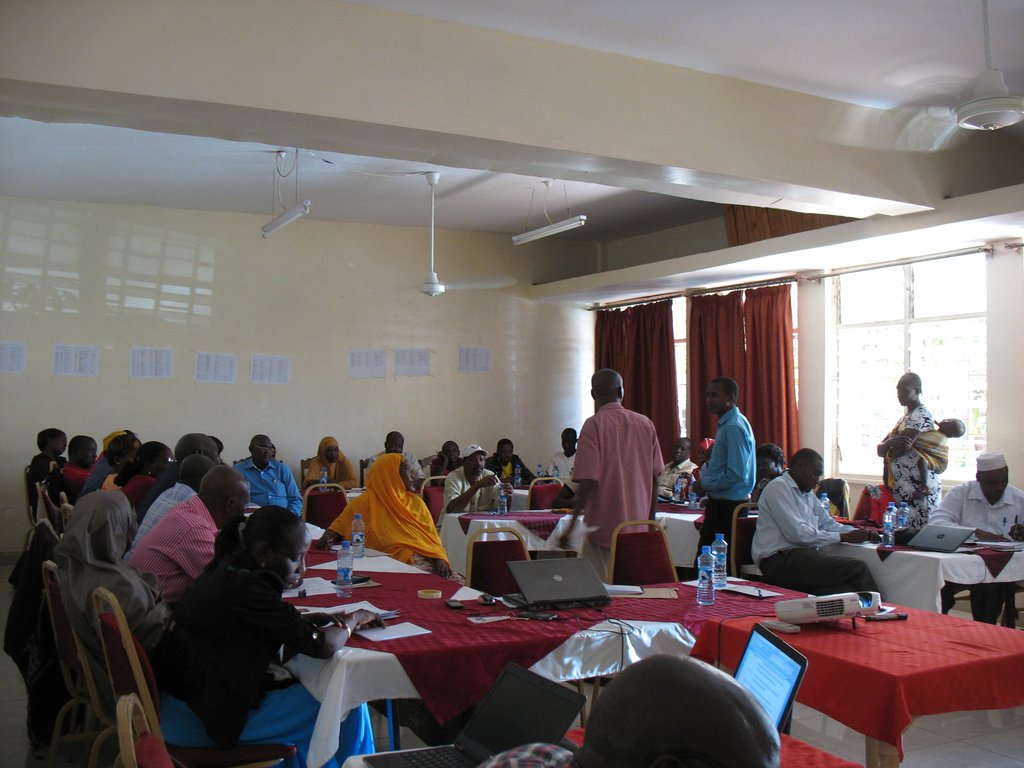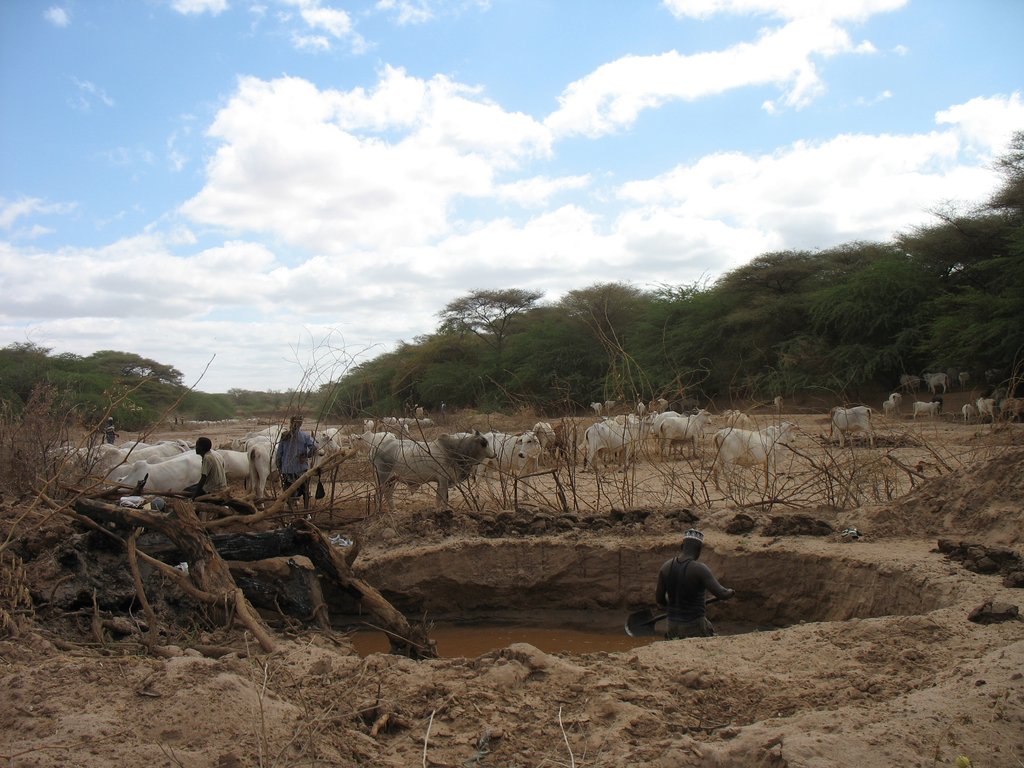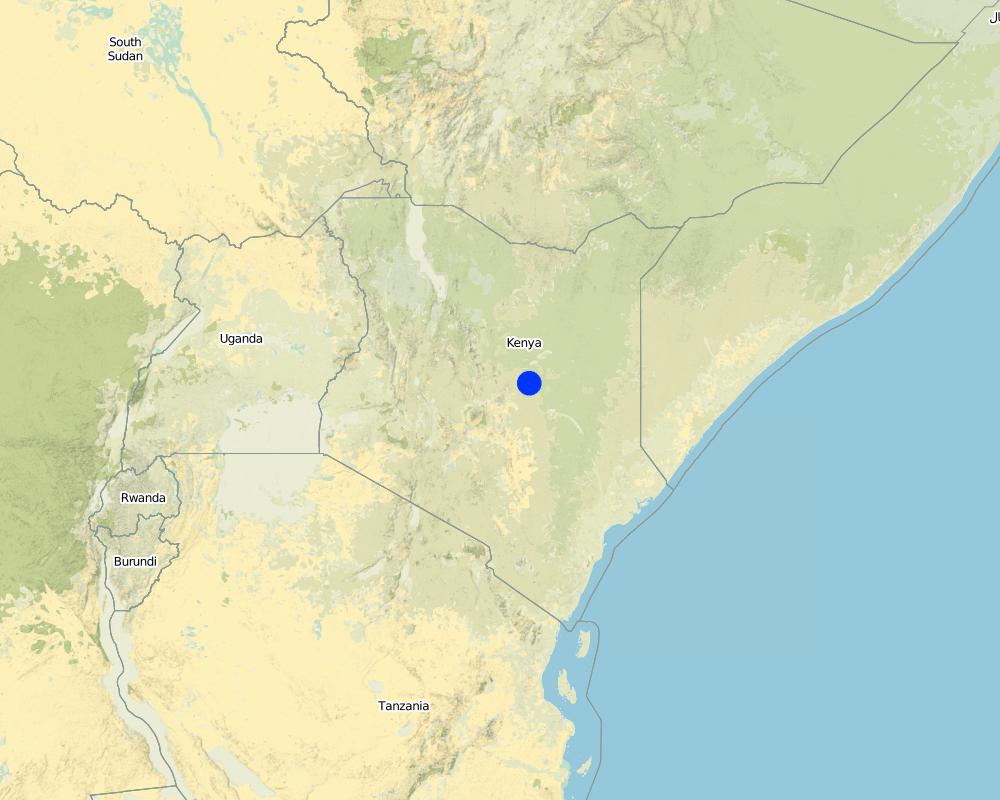Inclusive strategic planning for water, energy and climate change in the rangelands [肯尼亚]
- 创建:
- 更新:
- 编制者: IBRAHIM JARSO
- 编辑者: Caroline King-Okumu
- 审查者: Rima Mekdaschi Studer, Donia Mühlematter
Devolved strategic planning
approaches_3441 - 肯尼亚
- Inclusive strategic planning for water, energy and climate change in the rangelands: July 31, 2018 (inactive)
- Inclusive strategic planning for water, energy and climate change in the rangelands: Aug. 17, 2018 (inactive)
- Inclusive strategic planning for water, energy and climate change in the rangelands: Aug. 17, 2018 (inactive)
- Inclusive strategic planning for water, energy and climate change in the rangelands: Sept. 3, 2018 (inactive)
- Inclusive strategic planning for water, energy and climate change in the rangelands: May 13, 2018 (inactive)
- Inclusive strategic planning for water, energy and climate change in the rangelands: Nov. 2, 2021 (public)
- Inclusive strategic planning for water, energy and climate change in the rangelands: May 22, 2018 (inactive)
- Inclusive strategic planning for water, energy and climate change in the rangelands: May 13, 2018 (inactive)
查看章节
全部展开 全部收起1. 一般信息
1.2 参与方法评估和文件编制的资源人员和机构的联系方式
SLM专业人员:
有助于对方法进行记录/评估的项目名称(如相关)
Strengthening Adaptation and Resilience to Climate Change in Kenya Plus (StARCK+)有助于对方法进行记录/评估的机构名称(如相关)
Resource Advocacy Programme (RAP) - 肯尼亚1.3 关于使用通过WOCAT记录的数据的条件
(现场)数据是什么时候汇编的?:
22/01/2018
编制者和关键资源人员接受有关使用通过WOCAT记录数据的条件。:
是
2. SLM方法的描述
2.1 该方法的简要说明
Inclusive strategic planning for water, energy and climate change in the rangelands at county, sub-county, ward and location levels. This involves convening stakeholder groups and reviewing databases to prepare for future needs for rangeland, water and other resources under changing climatic conditions.
2.2 该方法的详细说明
该方法的详细说明:
This participatory approach consists of strategic planning through a method that embraces the perspectives of the stakeholder groups, including rangeland resource user associations. Strategic planning is needed in order to rebalance the threats and opportunities created by the annual cycle of droughts and floods, and to coordinate the efforts of local, national and international actors. Key elements of the strategic planning approach include:
i) Scientific tools, databases, systems, and capacities to observe and monitor climate effects, extractions and of water within the catchment;
ii) Clean, affordable and friendly technological solutions to redistribute and conserve water and energy supplies where they are needed within the catchment, particularly during drought and floods;
iii) Inclusive institutions, including active local participation both formally established and customary, to prioritize, guide, supervise and maintain the necessary information systems and infrastructure.
The County Ministry of Water, Energy and Climate Change encourages, and is involved in, a strong community consultation process. It publicly reviews its databases to prioritize investments for a multi-sectoral Strategic Plan. The plan is used to guide investments from the county budget, and also by other actors intending to contribute to managing water, energy and climate change within the county. In the past, the lack of such a strategy and consultation process has held back coordination amongst resource users, and limited the effectiveness of many county and donor-supported interventions, especially in the rangeland areas.
2016-7 was the first time that such an approach to planning had been explored by the county officials. Over 100 women and men representing local customary resource user associations, women’s groups, formal water resource user associations, water committees, irrigation committees, ward adaptation planning committees and others took part in a series of sub-county level consultation meetings. These were conducted in appropriate languages, depending on the mix of participants. The public meetings were preceded by technical preparatory meetings amongst the county technical officers and resource persons.
The Sector Strategic Plan feeds into the preparation of the County Integrated Development Plan (with a 5-year timeframe), as well as the annual budgeting for the county government and its development partners. The recommendations also support and feed into ongoing catchment level planning, as well as broader national planning debates in Kenya, particularly those concerning the Arid and Semi-Arid Lands (ASALs). The overall objective of the Strategic Plan is to enable Isiolo county and its neighbouring ASAL counties in Kenya - and the Horn of Africa - to achieve their full potential as the crucibles of national and global prosperity, security and spiritual well-being.
2.3 该方法的照片
2.5 采用该方法的国家/地区/地点
国家:
肯尼亚
区域/州/省:
Isiolo
有关地点的进一步说明:
Both urban and rural areas of Isiolo county.
Map
×2.7 方法的类型
- 最近的本地倡议/创新
2.8 该方法的主要目的/目标
The overall objective of the Strategic Plan is to enable Isiolo county and its neighbouring ASAL counties in Kenya – as well as in the Horn of Africa - to achieve their full potential as the crucibles of national and global prosperity, security, and spiritual well-being.
2.9 推动或妨碍实施本办法所适用的技术的条件
社会/文化/宗教规范和价值观
- 启动
The approach is embedded in the local institutional processes and therefore easy to implement.
- 阻碍
The occurrence of crises and emergencies (such as drought) routinely disrupts long-term strategic planning.
财务资源和服务的可用性/可得性
- 启动
County governments have some resources to convene meetings, but communities make their own contributions to prepare and support implementation of the approach.
- 阻碍
Very few donors are willing to provide funds to support this approach.
机构设置
- 启动
Ward-level adaptation planning committees connect the county level process to the local resource user institutions at the location level.
- 阻碍
Collision between the mandates of traditional and formal structures.
参与者的的协作/协调
- 启动
Many NGOs and local organizations support the implementation of the approach and will benefit from improved coordination and planning.
- 阻碍
Government and some NGOs occasionally establish parallel policy processes.
法律框架(土地使用权、土地和水使用权)
- 启动
2010 national constitutional reforms promote devolution. Traditional customary institutions are actively and locally respected.
- 阻碍
Weak catchment institutions and coordination.
政策
- 启动
2010 Constitution, 2030 Plan for the ASALs.
- 阻碍
Traditional rules not known to everyone.
土地治理(决策、实施和执行)
- 启动
County government makes informed decisions following consultation with communities and the formation of databases.
- 阻碍
Literacy and language barriers (though can be overcome through good communication, mobility and outreach by county officers)
了解SLM,获得技术支持
- 启动
Traditional skills are much used as an input to participatory resource maps and databases.
- 阻碍
Little technical support.
市场(购买投入,销售产品)和价格
- 启动
Ensures security and therefore the market thrives.
- 阻碍
The approach is social rather than market oriented.
工作量、人力资源可用性
- 启动
Youth provide manpower on a voluntary basis.
- 阻碍
Volunteers sometimes don’t come out for work.
3. 相关利益相关者的参与和角色
3.1 该方法涉及的利益相关者及其职责
- 当地土地使用者/当地社区
Community members, Elders’ Council (Dedha in Boran setups).
Agree on the pasture and water management approach and implement it.
- 社区组织
Ward Adaptation Planning Committees.
Implement community plans and fundraise for them.
- NGO
RAP, MIDP and Adaptation Consortium (ADA).
Support communities in implementing the approach.
- 地方政府
Isiolo County Government’s Department of Water, Energy and Climate Change.
Participate in the implementation of the approach.
如果涉及多个利益相关者,请注明领导机构:
Isiolo County Government
3.2 当地土地使用者/当地社区参与该方法的不同阶段
| 当地土地使用者/当地社区的参与 | 指定参与人员并描述活动 | |
|---|---|---|
| 启动/动机 | 互动 | County government, National Drought Management Authority, Water Resource Management Authority, RAP, IIED. |
| 计划 | 互动 | Local customary resource user associations, women’s groups, formal water resource user associations, water committees, irrigation committees, ward adaptation planning committees and others. |
| 实施 | 互动 | County government and resource users. |
| 监测/评估 | 互动 | County government and resource users. |
| 被动 | National government, international donors. |
3.3 流程图(如可用)
具体说明:
Local village level community institutions are involved in the planning and management of resources. The community institutions at village level are connected to those at ward level, which connect to sub-county and county level institutions for planning. Lower level institutions had not ever previously been asked for their opinions and inputs.
作者:
Ibrahim Jarso
3.4 有关SLM技术选择的决策
具体说明谁有权决定选择要实施的技术:
- 所有相关参与者,作为参与式方法的一部分
明确做出决策的依据:
- 对充分记录的SLM知识进行评估(基于证据的决策)
- 研究结果
- 个人经验和意见(无记录)
4. 技术支持、能力建设和知识管理
4.1 能力建设/培训
是否为土地使用者/其他利益相关者提供培训?:
否
4.2 咨询服务
土地使用者有权使用咨询服务吗?:
否
4.3 机构强化(组织发展)
是否通过这种方法建立或加强了机构?:
- 是,适度
具体说明机构的强化或建立程度:
- 本地
说明机构、角色和职责、成员等。:
County government's officers skills in participatory engagement were improved.
具体说明支持类型:
- 能力建设/培训
提供进一步细节:
Support was provided on the job.
4.4 监测和评估
监测和评估是该方法的一部分吗?:
否
4.5 研究
研究是该方法的一部分吗?
否
5. 融资和外部物质支持
5.1 该方法中SLM组成部分的年度预算
如果不知道准确的年度预算,请给出一个范围:
- 10,000-100,000
注释(例如主要的资助来源/主要捐助者):
The financial support to conduct community consultation meetings was provided by Cordaid.
5.2 为土地使用者提供财政/物质支援
土地使用者是否获得实施该技术的财政/物质支持?:
否
5.3 对特定投入的补贴(包括劳动力)
- 无
如果土地使用者的劳动力是一项重要的投入,那么是不是:
- 自愿
注释:
Communities participated in consultation meetings voluntarily.
5.4 信用
是否根据SLM活动的方法给予信用值?:
否
5.5 其它激励或手段
是否有其他激励措施或工具用于促进SLM技术的实施?:
否
6. 影响分析和结论性陈述
6.1 方法的影响
该方法是否有助于当地土地使用者,提高利益相关者的参与度?:
- 否
- 是,很少
- 是,中等
- 是,支持力度很大
The communities were able to participate in planning to improve development at local grassroots level.
这种方法是否有助于基于证据的决策?:
- 否
- 是,很少
- 是,中等
- 是,支持力度很大
The Approach was able to offer opportunities for all community groups to provide their inputs into the process of strategic planning at county level, allowing room for evidence-based decisions informed by people’s experience.
该方法是否帮助土地使用者实施和维护SLM技术?:
- 否
- 是,很少
- 是,中等
- 是,支持力度很大
The Approach allowed community members to document their needs and priorities in line with their sustainable land management systems, which were traditional and holistic.
该方法是否提高了SLM的协调性和成本效益?:
- 否
- 是,很少
- 是,中等
- 是,支持力度很大
The Approach brought together key community-level stakeholders and coordinated them in planning.
该方法是否调动/改善了使用财务资源实施SLM的途径?:
- 否
- 是,很少
- 是,中等
- 是,支持力度很大
The Approach produced a participatory and inclusive plan that included costs for support at different levels and this helped in fundraising for community investments.
该方法是否提高了土地使用者实施土地管理的知识和能力?:
- 否
- 是,很少
- 是,中等
- 是,支持力度很大
County government officers learnt that the approach was very productive in bringing out ideas from the grassroots to inform strategic planning.
该方法是否提高了其他利益相关者的知识和能力?:
- 否
- 是,很少
- 是,中等
- 是,支持力度很大
The stakeholders that came together learnt a lot from the process and multi-stakeholder forums like WASH clubs were formed out of the discussions.
该方法是否建立/加强了机构、利益相关者之间的合作?:
- 否
- 是,很少
- 是,中等
- 是,支持力度很大
Many institutions that were consulted in the implementation of the approach were strengthened in their capacity - and were able to engage in subsequent government-community consultations that came up later.
该方法是否有助于社会和经济弱势群体?:
- 否
- 是,很少
- 是,中等
- 是,支持力度很大
The approach ensured consultations with special interest/disadvantaged groups.
该方法是否改善了性别平等并赋予女性权力?:
- 否
- 是,很少
- 是,中等
- 是,支持力度很大
A significant proportion of women and girls attended the meetings and made critical and unique contributions. Deliberate efforts were undertaken to ensure inclusivity by holding women’s meetings to seek their inputs.
该方法是否鼓励年轻人/下一代土地使用者参与SLM?:
- 否
- 是,很少
- 是,中等
- 是,支持力度很大
Young people were also represented in the consultations.
该方法是否改善了供水和卫生条件?:
- 否
- 是,很少
- 是,中等
- 是,支持力度很大
The approach identified challenges, opportunities and actions that could be undertaken in improving access to water and sanitation in the development of a strategic plan.
该方法是否带来了更可持续的能源使用?:
- 否
- 是,很少
- 是,中等
- 是,支持力度很大
The approach identified locally utilisable sources of energy, and encouraged the use of clean and green energy.
该方法是否提高了土地使用者适应气候变化/极端情况和减轻气候相关灾害的能力?:
- 否
- 是,很少
- 是,中等
- 是,支持力度很大
The approach allowed the county government officers to engage with the community in discussions on climate-related disasters as well as their elaborated traditional systems of grazing. Communities were advised to also use scientific measures, like utilization of CIS forecasts, to deal with climate-related disasters.
6.2 土地使用者实施SLM的主要动机
- 增加生产
The process of inclusive strategic planning exposed the deepest vulnerabilities of communities for the county government investments to address it. This has improved productivity in all sectors.
- 减少土地退化
The approach allowed proper planning on water investments which had impacts in management and proper use of land and its resources. Placement of water investments closer to each other causes land degradation and through inclusive strategic planning this has been tremendously reduced.
- 环境意识
Through the Approach environmental protection and conservation had been given the first priority as a way to sustainably use the natural resources.
6.3 方法活动的可持续性
土地使用者能否维持通过该方法实施的措施(无外部支持的情况下)?:
- 是
若是,请说明如何维持:
Community members can demand participatory and inclusive development in all government plans and policies, in the way the strategic plan for water sector was developed by the Isiolo County Government's department of Water, Energy and Climate Change.
6.4 该方法的长处/优点
| 土地使用者眼中的长处/优势/机会 |
|---|
| All community groups are given an opportunity to contribute to the planning process. |
| Hidden community concerns and challenges are brought out by the participatory process. |
| County government officers were able to hear first-hand community issues and respond to community questions regarding their responsibilities. |
| 编制者或其他关键资源人员认为的长处/优势/机会 |
|---|
| The inclusive and participatory process was extremely productive in bringing out issues. |
| Community knowledge of their challenges and optimistic ideas for possible solutions were very enriching. |
| Women’s participation and their contribution to issues was unexpectedly high and demonstrates progress towards gender equity. |
6.5 该方法的弱点/缺点以及克服它们的方法
| 土地使用者认为的弱点/缺点/风险 | 如何克服它们? |
|---|---|
| The Approach was unable to reach all villages in the county to seek their inputs. | Representatives from all villages can be convened at ward level and advised to make cross-consultations before attending planning meetings. |
| Low literacy levels meant that not all people could engage properly with the formal planning process. | Using translators of local vernacular helped to reduce this challenge. |
| 编制者或其他关键资源人员认为的弱点/缺点/风险 | 如何克服它们? |
|---|---|
| The process was relatively expensive compared to previous county engagements. | Explain the value of county-community engagements in planning to communities, and encourage other stakeholders to support the process also. |
| The process took a long time to complete. | The team conducting the public engagement can conduct more than one initiative simultaneously and thereby economise on time. |
7. 参考和链接
7.1 方法/信息来源
- 实地考察、实地调查
Engaged 25 community members.
- 根据报告和其他现有文档进行编译
Reports of the Community Consultations used as source of information.
7.2 参考可用出版物
标题、作者、年份、ISBN:
Recommendations to the County Government of Isiolo for Preparation of a Strategic Plan on Water, Energy and Climate Change
可以从哪里获得?成本如何?
IIED Website
7.3 链接到网络上可用的相关信息
标题/说明:
Recommendations to the County Government of Isiolo for Preparation of a Strategic Plan on Water, Energy and Climate Change
URL:
pubs.iied.org/pdfs/10183IIED
标题/说明:
Cracking the climate-water-energy challenge in the drylands of Kenya
URL:
pubs.iied.org/pdfs/17408IIED
链接和模块
全部展开 全部收起链接
无链接
模块
无模块






